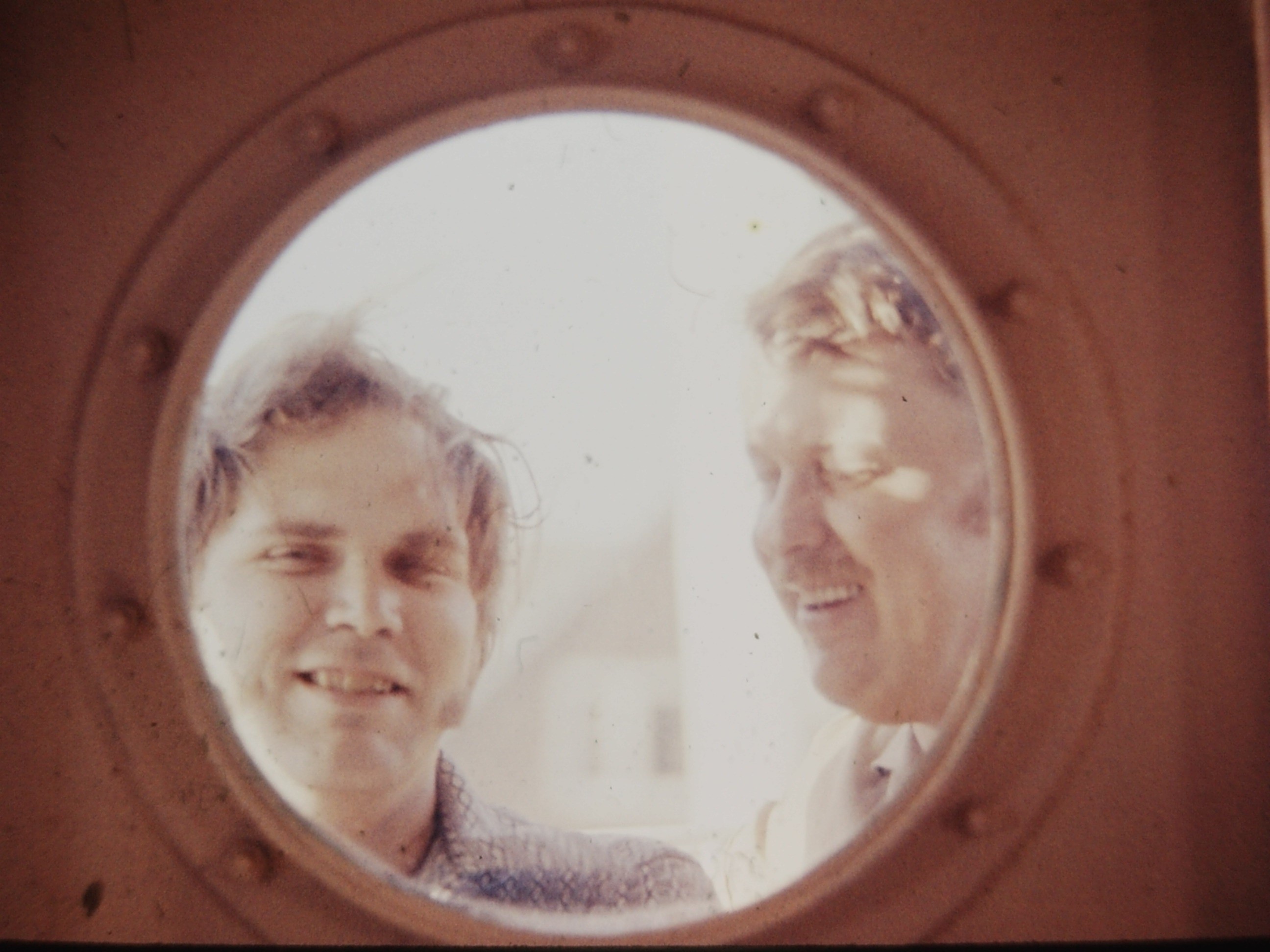Thomas P. Barnwell III ’65, SM ’67, PhD ’70 William Jouris ’61

Today’s tech landscape features an increasing number of machines that talk, most of them in a neutral-sounding American accent. Pioneering research in the 1960s by Thomas P. Barnwell III is widely acknowledged to have helped launch this speech synthesis technology. Less well known is that his MIT friend William Jouris was the source of that quintessential accent.
The project began in Building 26’s Research Laboratory of Electronics. Barnwell was working on a project aimed at reading printed text aloud for the blind, which produced the 1967 MIT Reading Machine, the first system capable of scanning text and producing continuous speech.
“My part of the Reading Machine was the talking piece, an analog synthesizer that could produce sounds of speech,” he recalls. “Words are a series of sounds, phonemes, but there’s also structural and hierarchical information that comes out in nuances like duration of sounds, pitch, and stresses.
“We needed to turn that structural information into control information for the synthesizer. To help with that, I started capturing reading voices of students to study how they made phrases. The variation was tremendous.”
One participant was Jouris, a Chicago-area native and Barnell’s Delta Upsilon fraternity brother: “I remember him showing me on a spectrum analyzer the difference between words pronounced with and without an accent. It was news to me, but he proved scientifically that I had no accent!”
The information, published in Barnwell’s dissertation, influenced the nascent field of speech synthesis. “It wasn’t the whole solution, but … it became a building block,” Barnwell says.
Barnwell went on to join the faculty at Georgia Tech, receiving the IEEE’s 2014 Jack Kilby Medal for his contributions to signal processing. He also cofounded Atlanta Signal Processors, now a subsidiary of Polycom, with Ron Schafer, PhD ’68, and Russ Mersereau ’69, SM ’69, ScD ’73. Jouris (who has also worked in nuclear engineering, oceanographic research, and environmental engineering) served as the company’s head of sales for several years.
“Tom and I still see each other sometimes,” says Jouris. “He and his wife are tremendous bluegrass musicians, and we’ll sit around and sing folk songs together.”
Keep Reading
Most Popular
Large language models can do jaw-dropping things. But nobody knows exactly why.
And that's a problem. Figuring it out is one of the biggest scientific puzzles of our time and a crucial step towards controlling more powerful future models.
The problem with plug-in hybrids? Their drivers.
Plug-in hybrids are often sold as a transition to EVs, but new data from Europe shows we’re still underestimating the emissions they produce.
Google DeepMind’s new generative model makes Super Mario–like games from scratch
Genie learns how to control games by watching hours and hours of video. It could help train next-gen robots too.
How scientists traced a mysterious covid case back to six toilets
When wastewater surveillance turns into a hunt for a single infected individual, the ethics get tricky.
Stay connected
Get the latest updates from
MIT Technology Review
Discover special offers, top stories, upcoming events, and more.